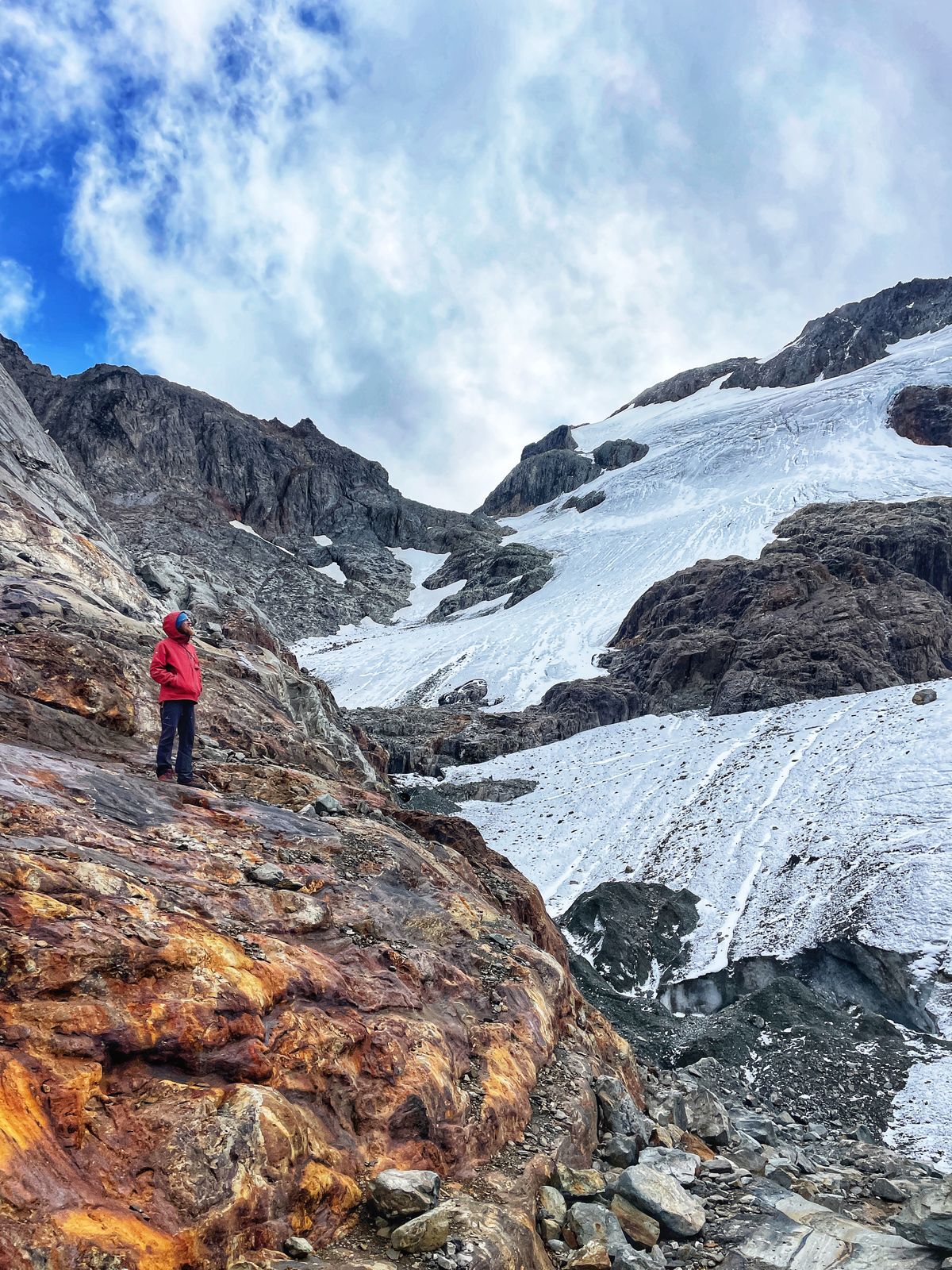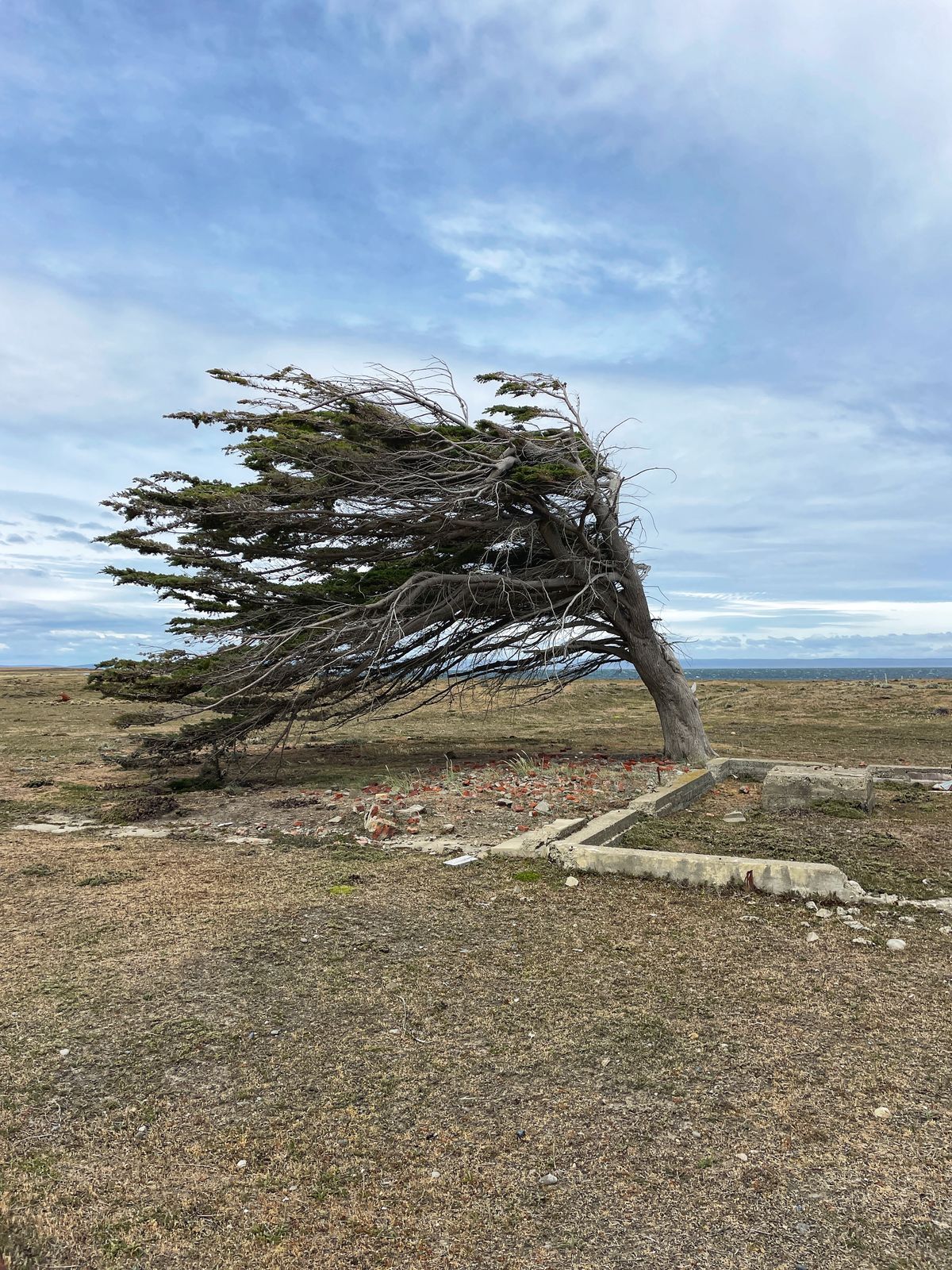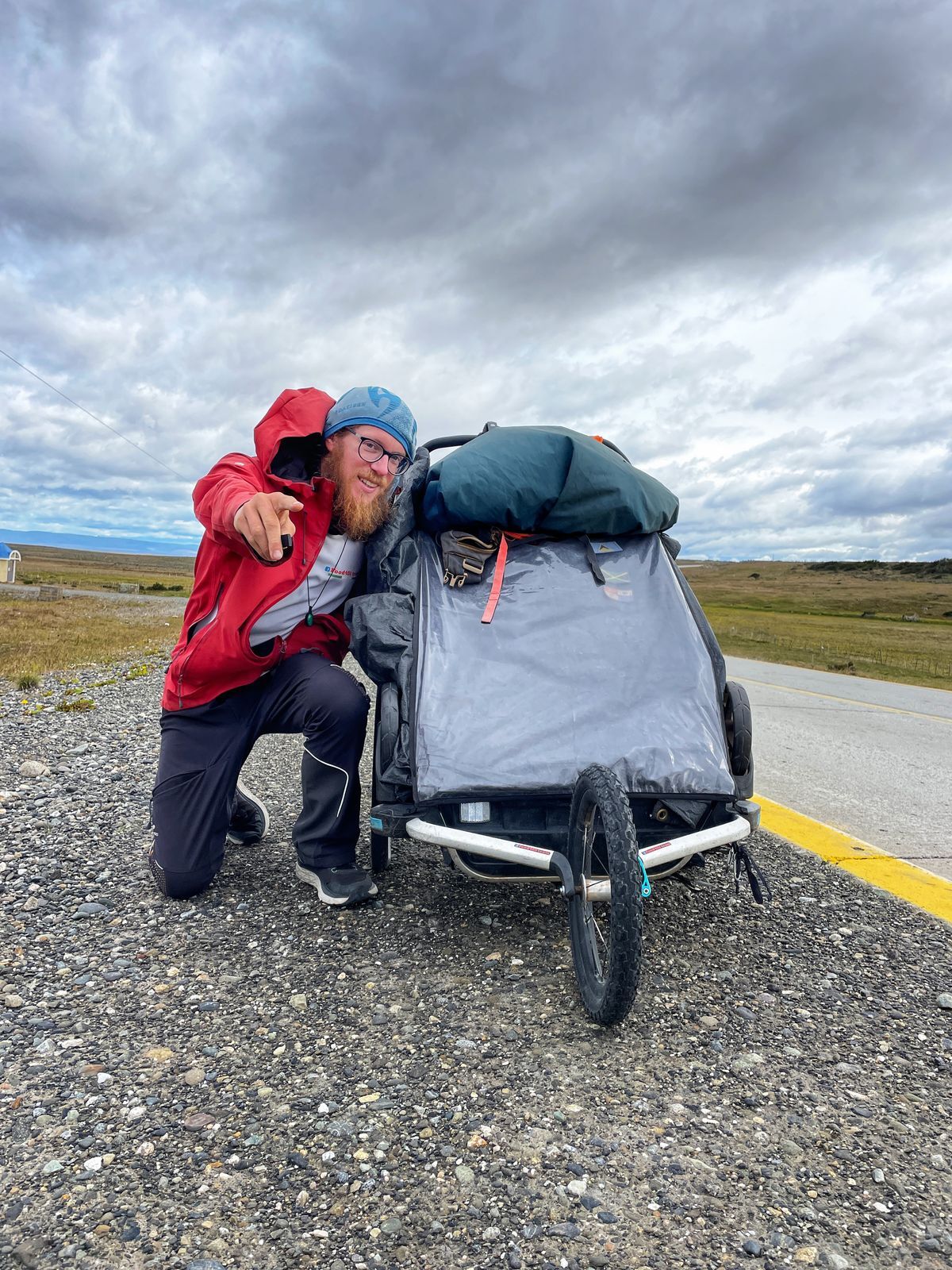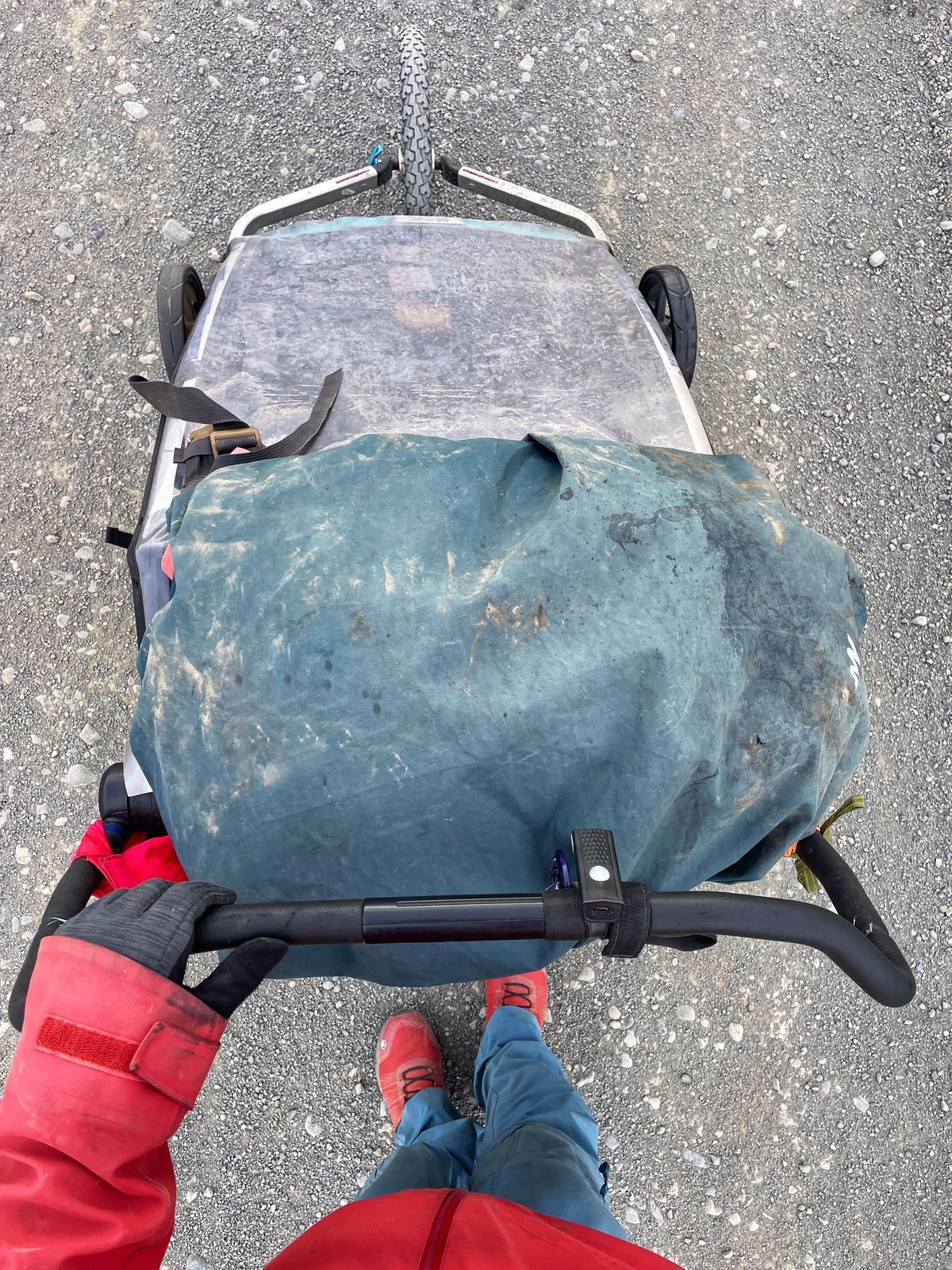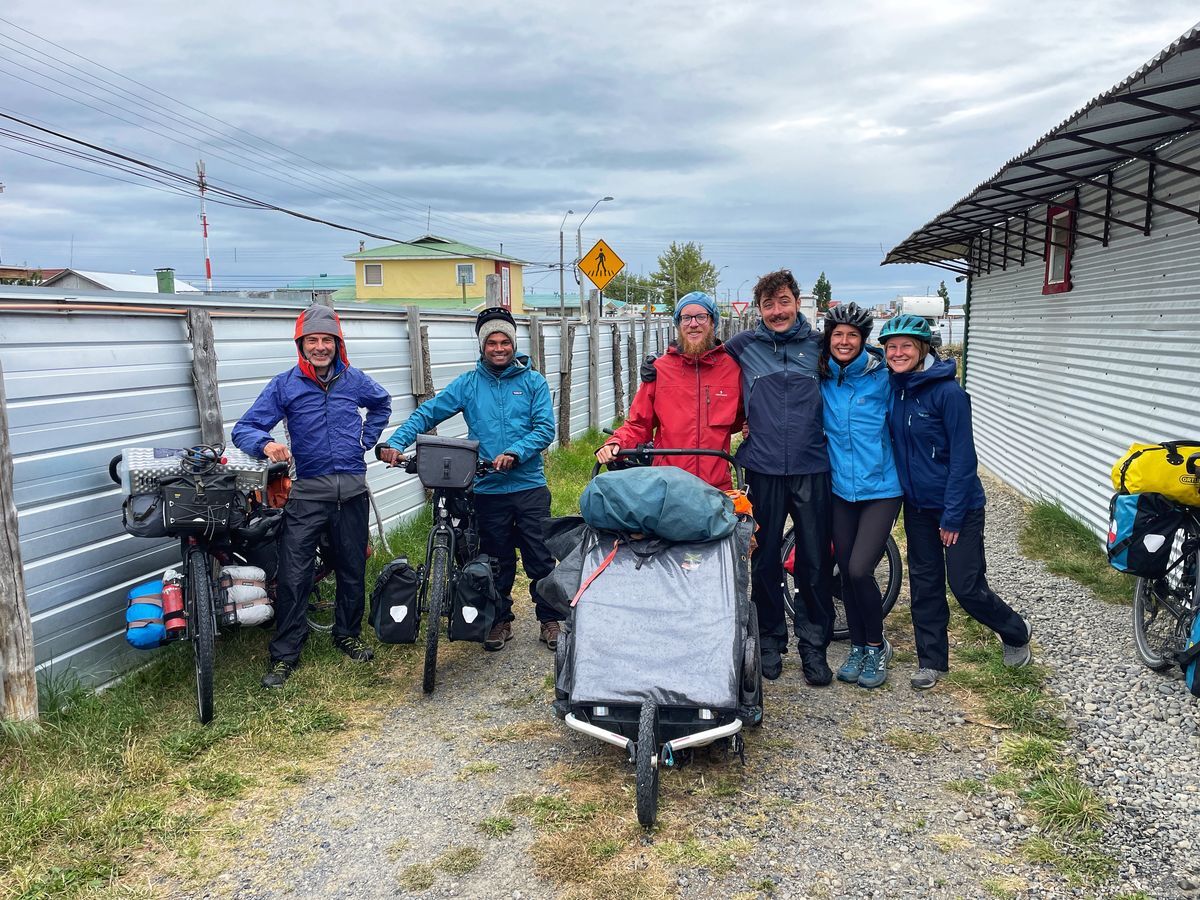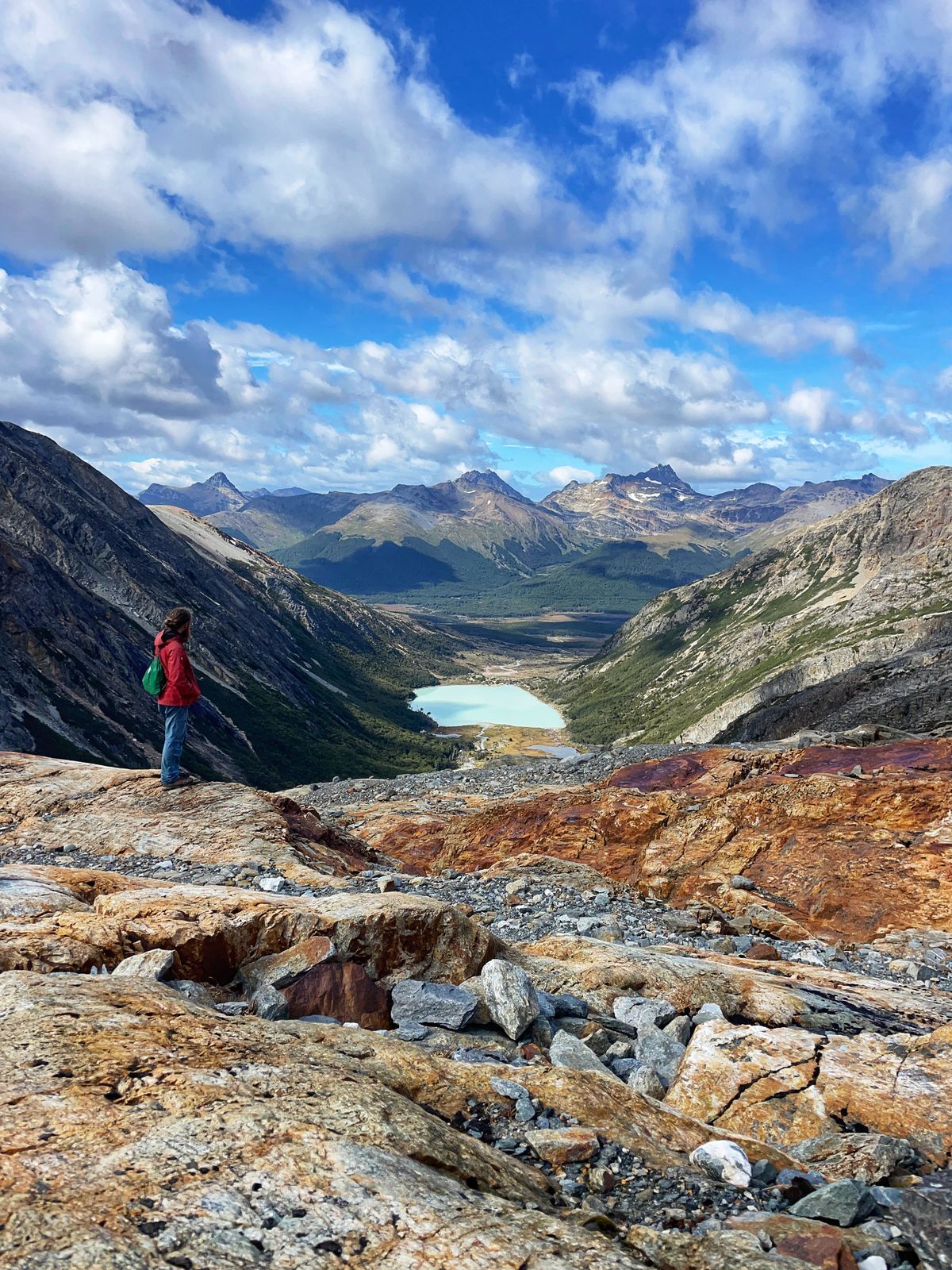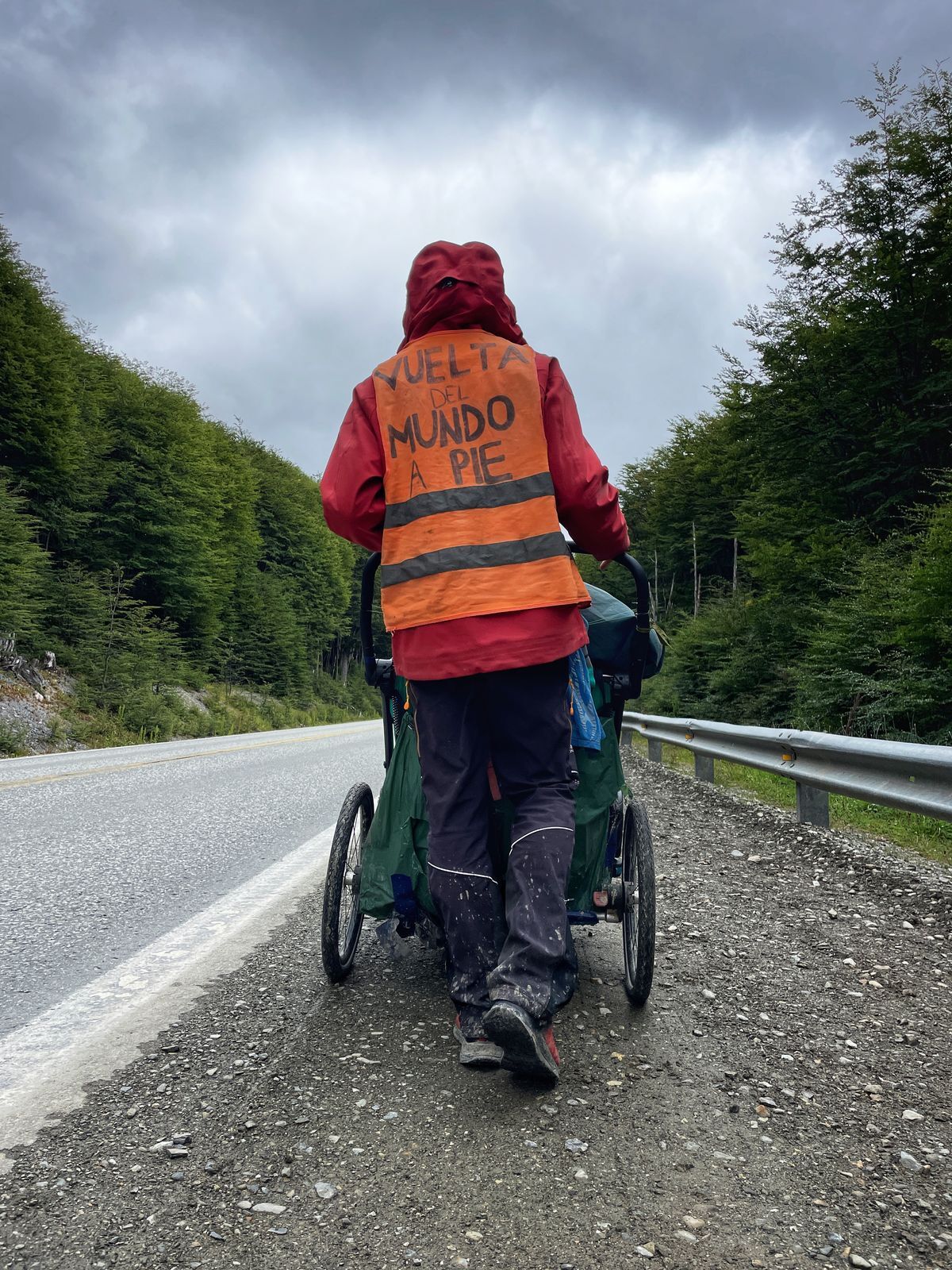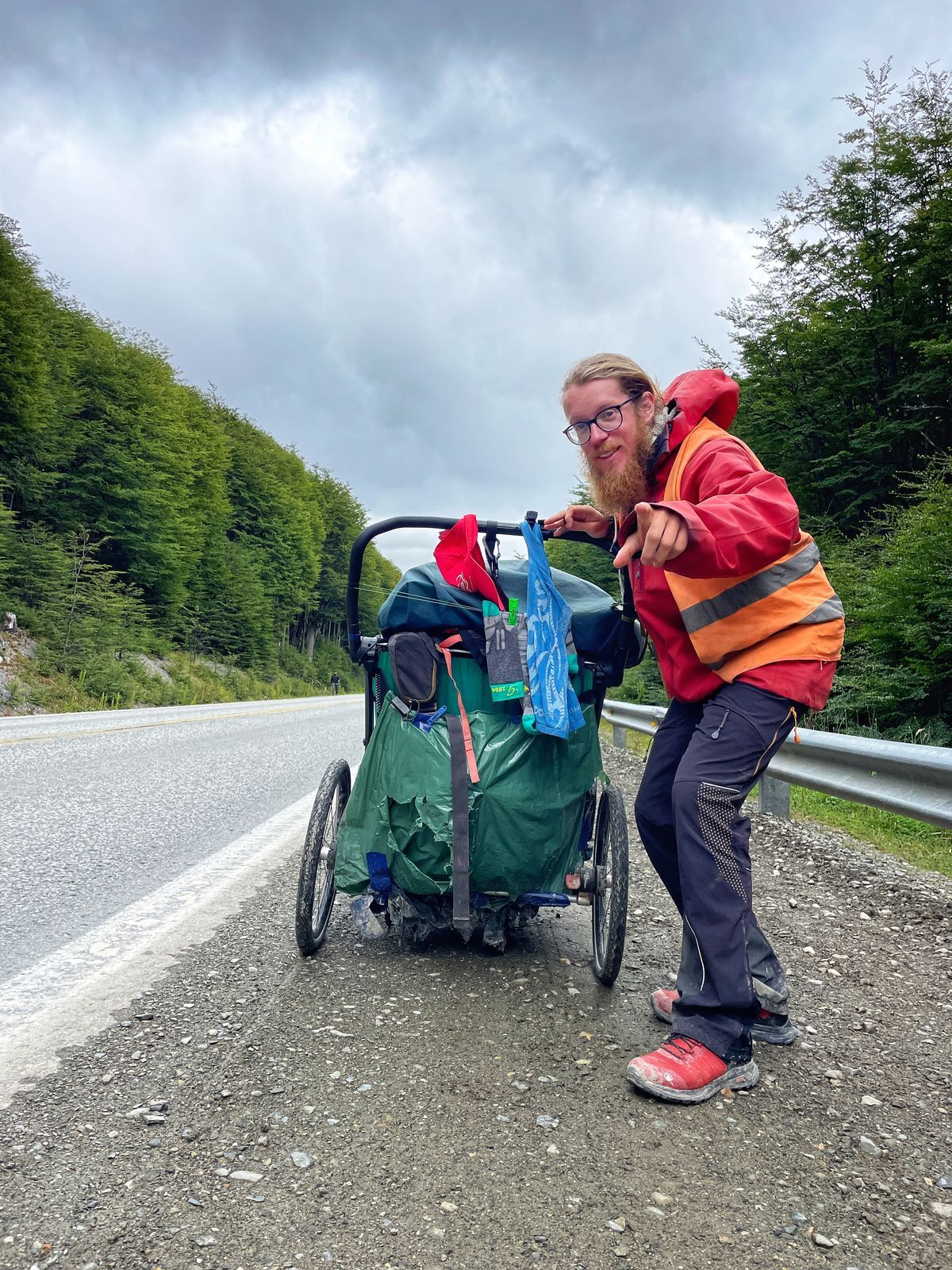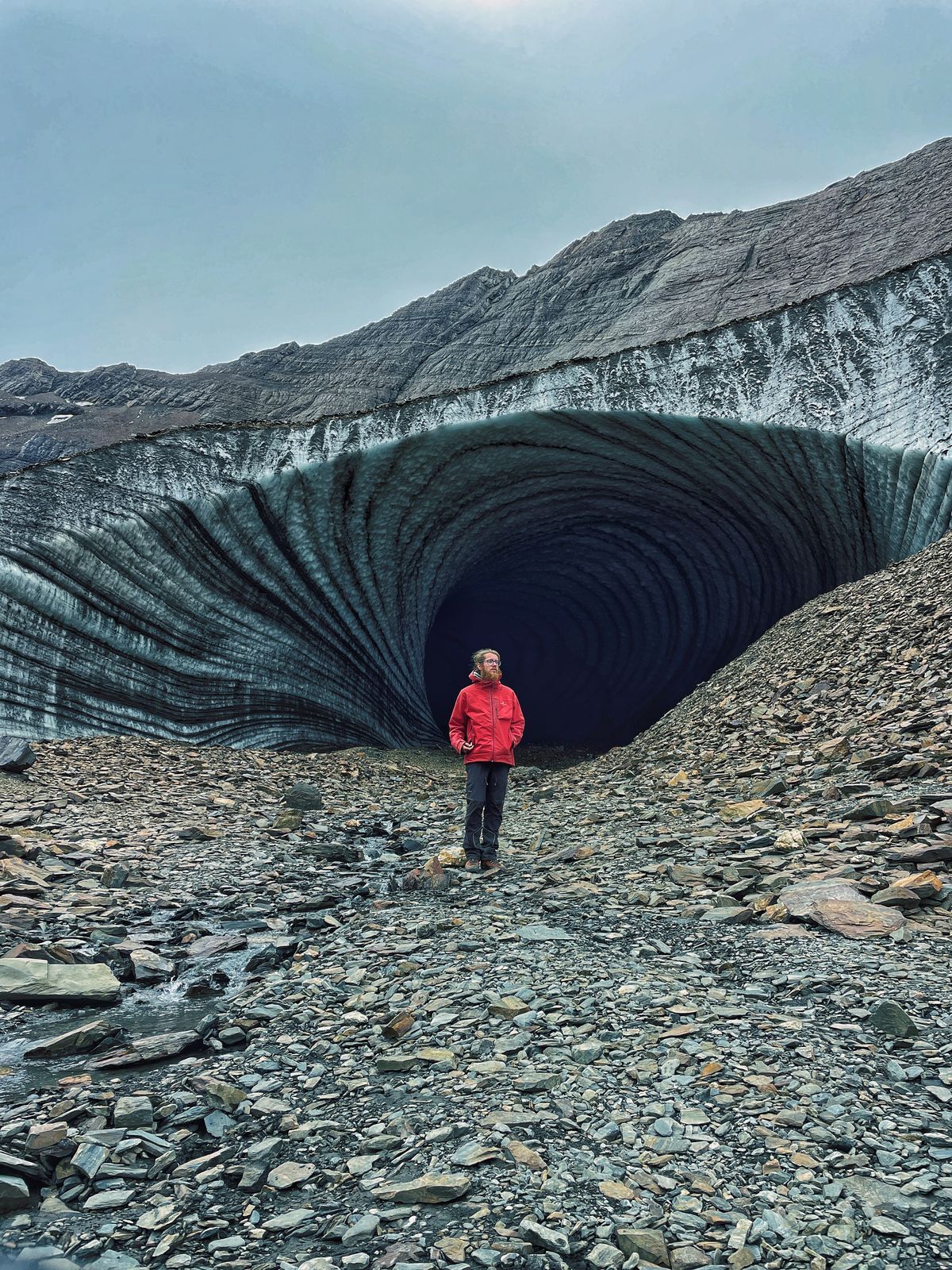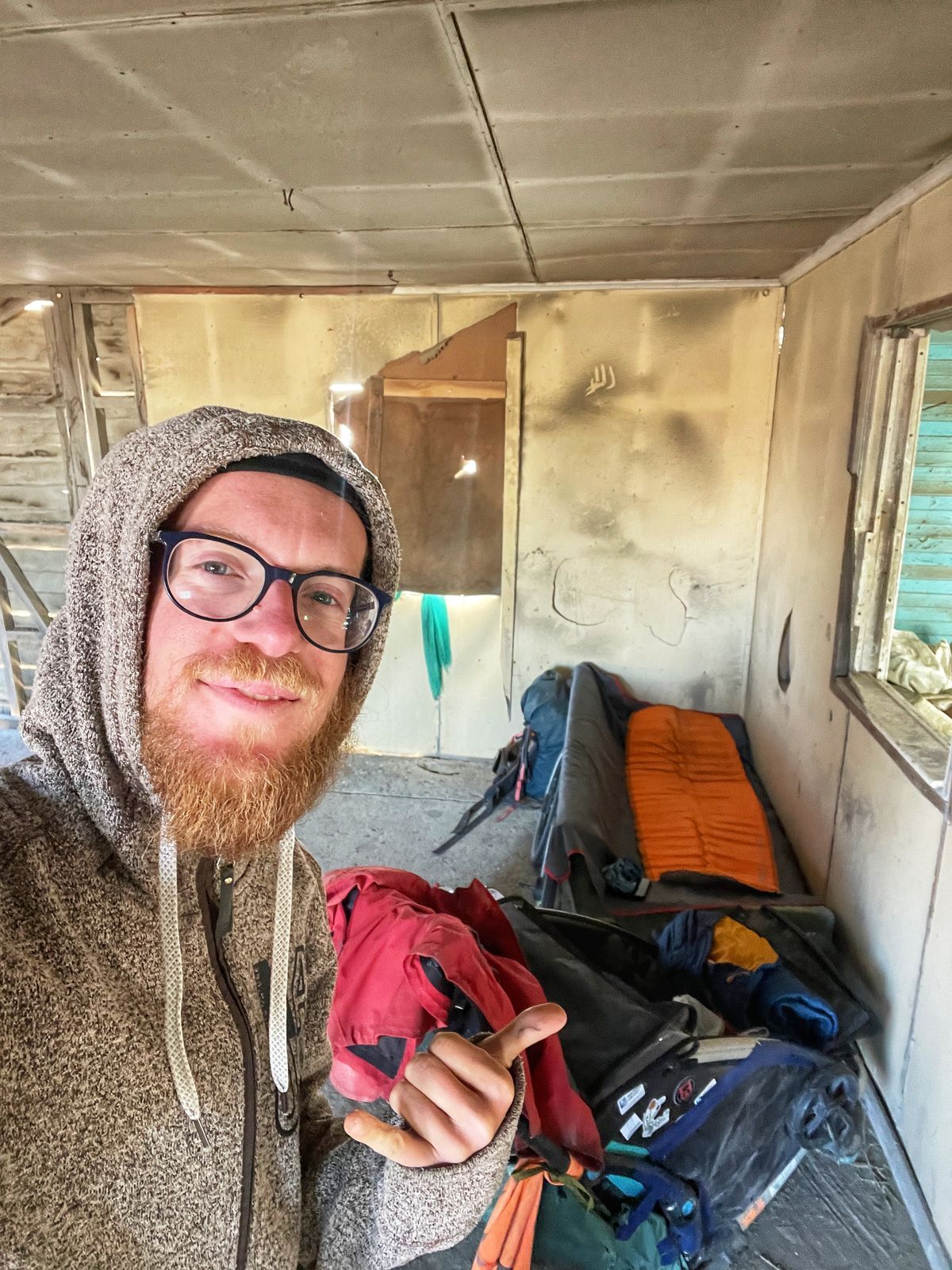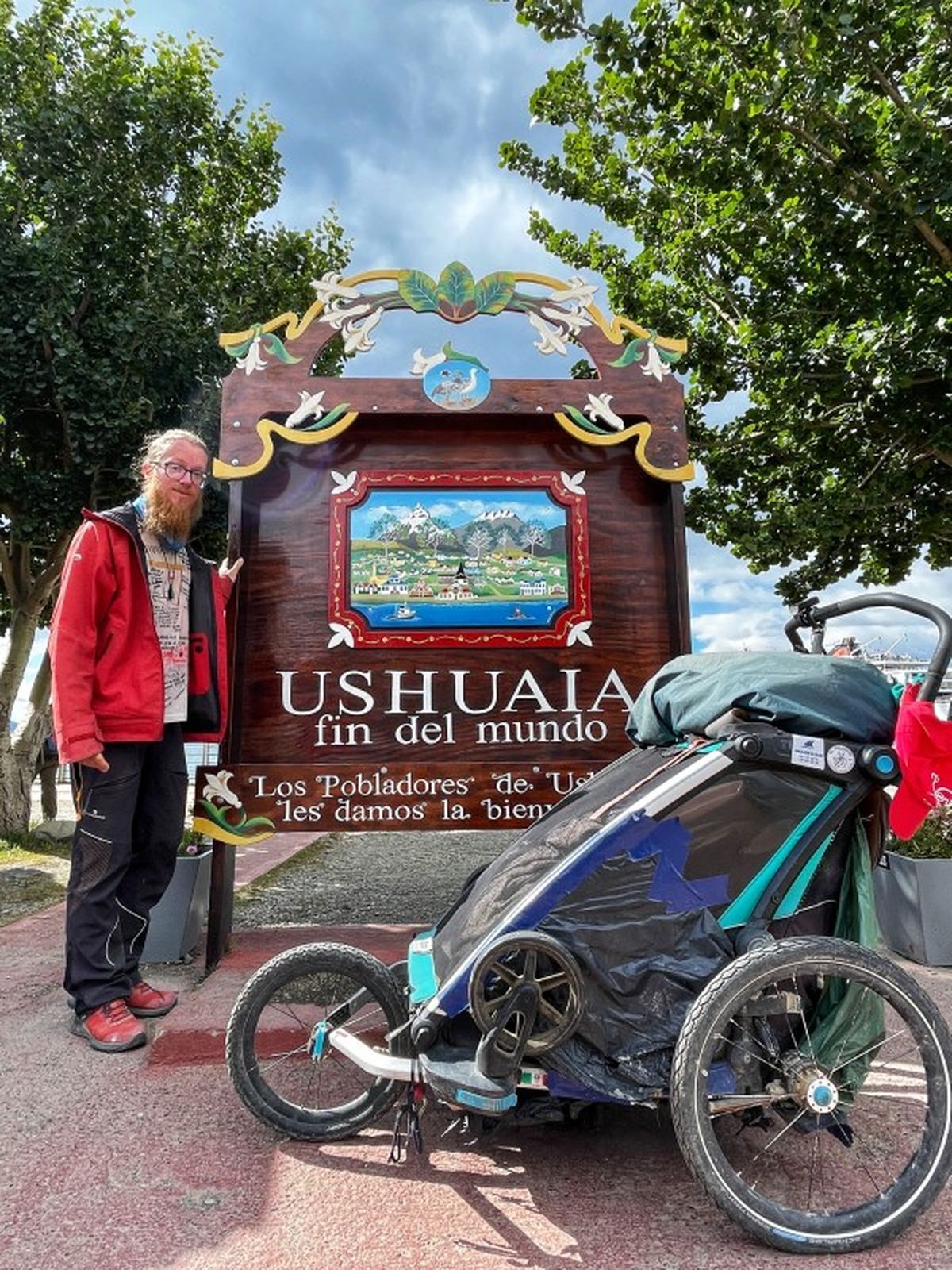
AT THAT TIME
How long until the End of the World?
I just left Calafate, the town of twenty thousand inhabitants that marks the entrance to the most famous glacier in South America, the Perito Moreno. The 70-meter-high and five-kilometer-long colossus is an impressive sight. Every now and then, tourist sites get it right. What's more, I was lucky: the day I went to see it, there was the World Cup final, so the walkways and lookouts were practically deserted. It happens once every thirty years...
The wind blows from the west, as always. The Southern Ice Fields are a hotbed of storms in the heart of the Andes, whose direct descendant is the desolate landscape of the Pampas. The rains are blocked on the other side of the Cordillera, the Chilean side of the Carretera Austral and the fjords, while here, in Argentine Patagonia, the dry and rough earth is populated by low thorny shrubs. One of them gives its name to the pueblo behind me, the calafate. It is a bramble with berries similar to our blueberries, but the fruit is still a few weeks away from ripening. Summer, in this hemisphere, has yet to begin.
I leave Calafate heading south, the direction I have been taking for the past two years. Quito and its Mitad del Mundo, block letters on the outskirts of the Ecuadorian capital, are now ten thousand kilometers away. I calculate that the End of the World, Ushuaia on the island of Tierra del Fuego, is still two months away, maybe less. I do a quick mental calculation: 250 km to the Chilean border, then 60 to Puerto Natales, a good week. Break, washing clothes and stocking up on food, having a real kitchen allows you to prepare something substantial to put under your teeth to recover the weight lost during the walk: butter, eggs and manjar - milk and sugar, the South American Nutella. From Puerto Natales it is 250 km to Punta Arenas, another week. Punta Arenas - Brenda and Arturo, she is the niece of Nelly who hosted me a few months ago in the central area of Chile. I have the contact, I will stop at their house for a few days to spend time together. I'll be craving some lightness when I get back to the city.
How far have I got? Oh yes, mid-January. From Punta Arenas you have to take a ferry to Porvenir, we are still in Chile but we are crossing from the mainland to the island of Tierra del Fuego. It was Magellan who renamed it that way. The fires lit by Yanama and Kawesk'ar must have impressed him quite a bit. Porvenir is small, maybe I won't stop, there is a fire station where I could ask for hospitality for the night but if I arrive early maybe I can walk a handful of kilometers before it gets dark. It is light until ten/eleven at night, so even starting to walk mid-morning I have plenty of time to grind out the daily 40 km stage. The Chilean border is 130 km away, that's 3-4 days. Tierra del Fuego is divided by a straight line, left Chile right Argentina. I go right. Two tense days to get to Rio Grande, an uninteresting industrial city, then another 200 km to Ushuaia. The end of the journey in South America, the fixed point after two years of travel. The End of the World.
REFLECTIONS ON THE ROAD
I let out a deep sigh, swelling my rib cage. The last thousand kilometers, damn it. In moments like these you start to take stock of what has been, trying to find or perhaps make sense of the time dedicated to so much effort. What is the common thread that brought me here? Slowness obviously, that of traveling on foot. But also beauty, that is, the purpose of slow traveling that makes you meet and know the names of people and things. I have found that the beauty of knowledge is the profound one that connects to what we experience. A mountain can strike you with its slender shape, its prominent peak or its snow-capped summit that stands out with its whiteness against the blue sky. But what will remain of it once we have looked away? A faded image filed away in memory, perhaps a photo among the thousands collected with haste and forgotten inside another memory, the distant and alien one of the phone. Naming things is an attempt at rescue that works through infatuation. The named object goes from being an object to that object, with a hint of feeling that ties us to the story born from the encounter with it. This is how my path makes sense: through the names of what I have known. Andes, Atacama Desert, Belén, Pablo, Gian, Patagonia, Campos de Hielo, Becky, Pampa… In a page of the diary I have transcribed the names of all the people who have left me something. Each of them is a chapter of this adventure and reading them will take me back to that moment in which the story was staged.
I am in the company of Ezio, the stroller that carries everything I need. Some would say that I am alone, but I think that over time Ezio has acquired a personality, greatly limiting the feeling of isolation that uninhabited places bring with them. In fact, we find ourselves talking quite frequently. Isn't that true, my friend?
“Of course, old carcass. In the realm of fantasy, everything is permitted. And you are daydreaming.”
“It seems to me a necessary setup for walking around the world. Where are we sleeping tonight?”
In a land dotted with rocks and shrubs the question may seem rhetorical but the Patagonian wind is famous for never sleeping. Every afternoon I have to find shelter, even just the wall of a ruined house. I recently inaugurated the Namika 2, the brand new two-seater 4-season tent by Ferrino, even lighter and more compact than the historic Manaslu. Even if the new tent is low and resists the wind well, I prefer to find a sheltered place. In the long run the wind tires and after a day of fighting, taking pressure off your ears is an indescribable relief.
I marked on the map the points that could offer protection. I arrive at a trickle of water with a bridge crossed in the middle, tonight I will camp here, protected by the concrete base. I pitch the tent and enjoy what remains of the afternoon. Having just left the city, tonight's dinner is ready to be eaten, there is no need to heat it. I spend the remaining hours of light between reading and observing the sky. In this corner of the world the clouds run very fast.
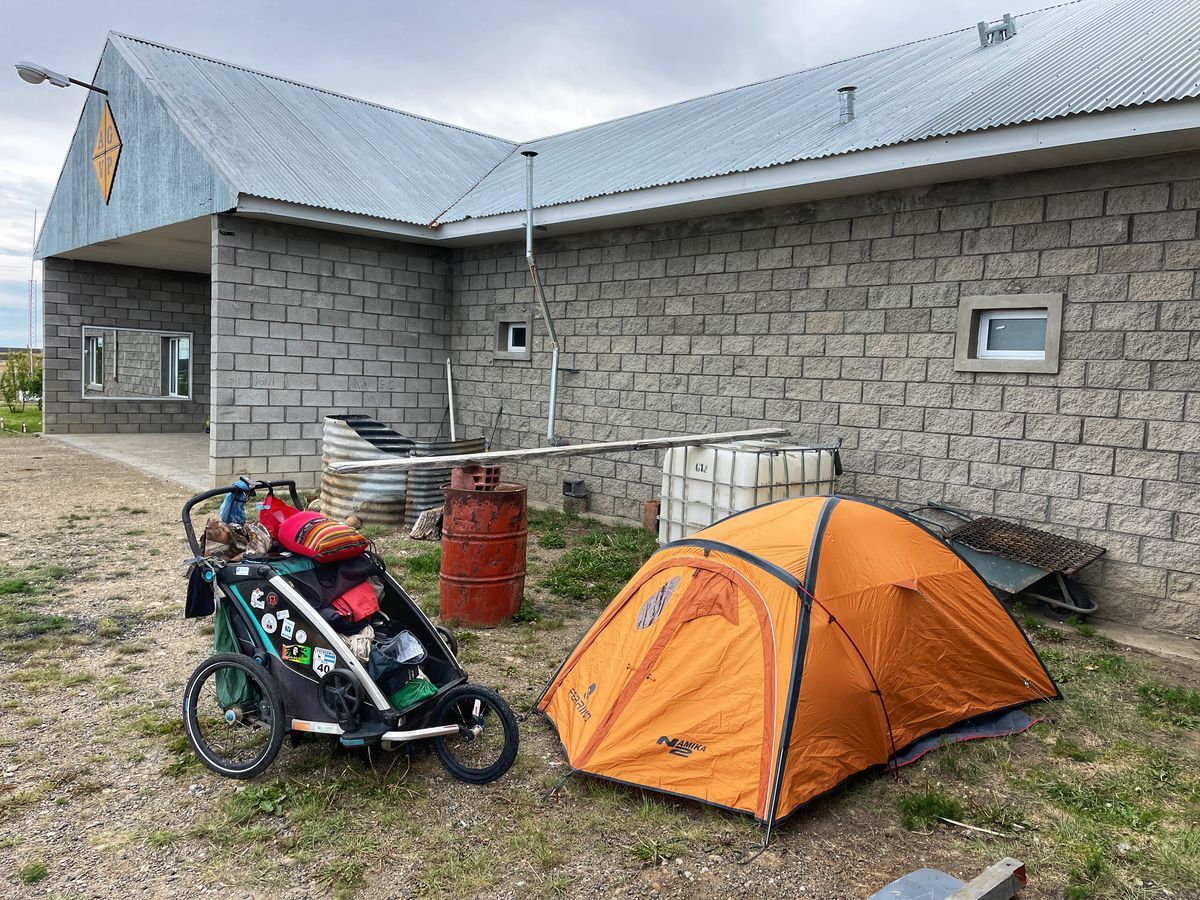
A LONG STRIP OF LAND
The days on the way to Chile continue with rich twists and turns. On Christmas Eve I am invited to share a lamb roast by Javier, the person in charge of maintaining the road to the puesto fijo Tapi Aike, a sort of roadhouse. I have met several of them on the way along Ruta 40, the road that starts from the border with Bolivia and reaches the southern tip of Argentina. Each time I have found hospitality, whether it was a place to pitch a tent or even a shower; in this case, a rich and abundant meal in the company of Javier and two German cycle tourists. I spend Christmas walking and in the evening I reach the border with Chile. Here too I manage to get something hot to put under my teeth. These isolated places are kept in operation by young soldiers who are assigned for a period of five years, far from their families and friends. The boys - we are the same age - are waiting for something new to break the monotony of their days and this time I am the one to bring it to them: a boy arrived on foot from Ecuador!
On December 26, I return to my beloved Chile, the long, narrow strip of land where I have lived for the last year. I arrive in Puerto Natales, where I meet other bike travelers at the cheapest campsite in town, and continue on to Punta Arenas. There are a couple of days with very strong winds, so much so that for once I prefer to spend the day in a tent and rest. It would be a stupid effort to push against a 100 km/h wind blowing in the opposite direction. Peering out of the porthole of the Namika, I can see some placid guanacos grazing on the dry grass and, thanks to a stroke of luck, I also manage to see a ñandú, the Patagonian ostrich.
I land on the island of Tierra del Fuego in mid-January. I am on track with the program I had planned, so I decide to slow down to take advantage of the last few days on the road. Almost two months will pass before leaving for Australia, there is no rush to arrive. Furthermore, on the Chilean side of the island, there are several shelters where you can take refuge. These are wooden forts designed for shepherds and fishermen, inside they are unfurnished but the comfort of four walls and a roof is the sweetest reward after a day of walking. Sheltered from the elements, cooking becomes a pleasant activity again. I realize how happy I am even for just a faint fire to heat the water: traveling teaches you that nothing can really be taken for granted.
The border of San Sebastian marks the last farewell to the journey in Chile. It took me 6000km, half of those traveled in South America, to cross it from top to bottom; I think I was the first person to do it all on foot. As I cross the border, I reflect. Have I really traveled in Chile? I think the answer is no because in my heart I feel that I have actually lived there. It is a question of the amount of time, of course: while I was studying at university I was on Erasmus for ten months and when I talk about that period it is normal to say "I lived abroad", so for equality of terms it comes naturally to say that this time too I "lived" in Chile. However, there is more. The wealth of experiences in this country is unmatched on this journey. I lived together with dozens of families who hosted me along the way, knowing their rhythms, political reflections and dreams, accompanying them to do the shopping, to queue at the post office and to the town hall. They taught me their sayings, the festivals of each region and the preparations with which the house is prepared for the arrival of winter. I sip steaming mate in front of a wood stove, carrying the heat into my stomach. It is no longer just a journey, this is my life, this is how I live now. I move, but I feel like I live the places I pass through, I let them kidnap me and as long as I am here, I belong there: I live there. I no longer travel from one place to another but I move from one place where I temporarily reside to another. Latin America is no longer where I have been, but where I belong.
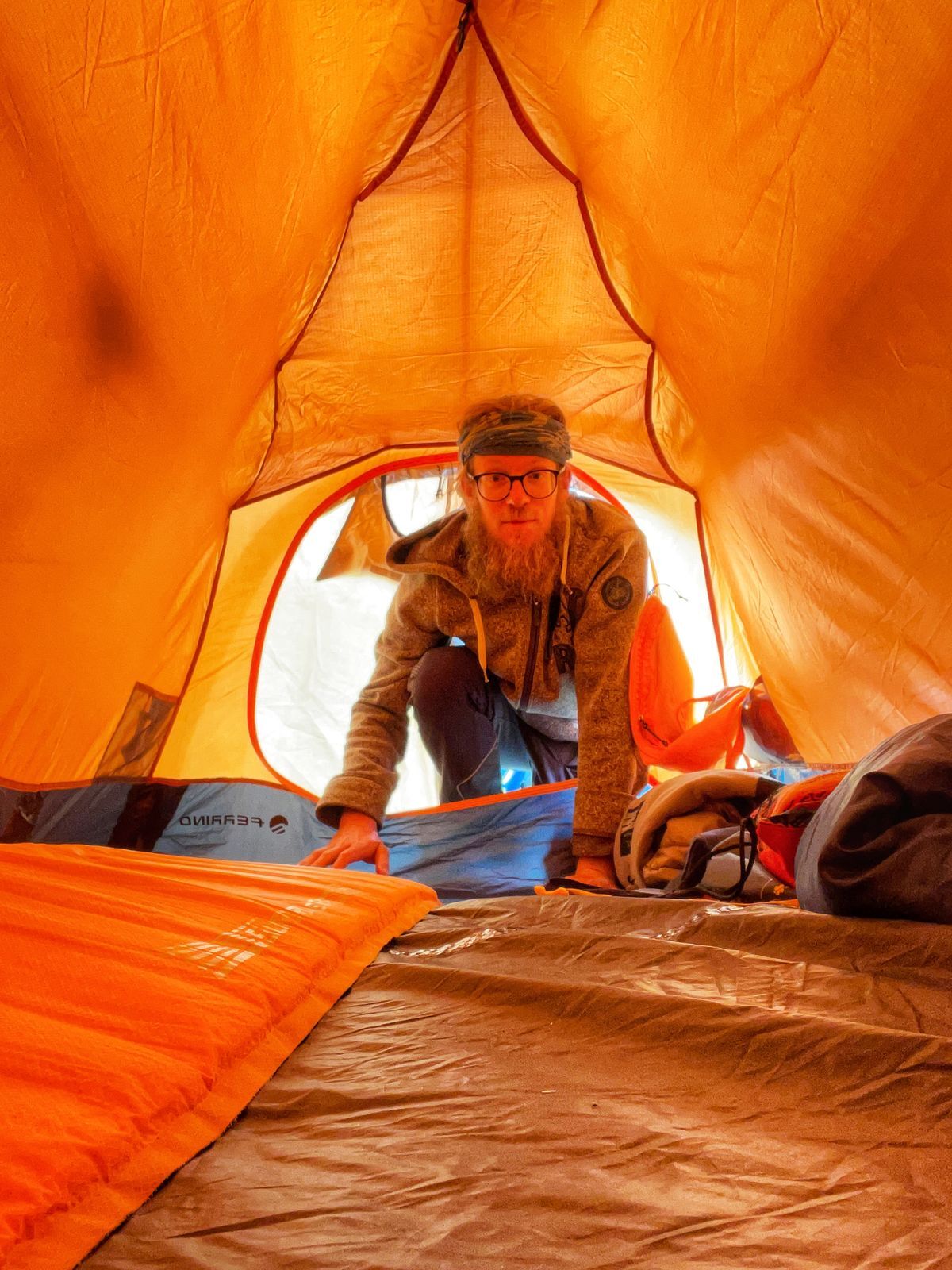
FINE…?
I arrive in Ushuaia about ten days later, physically and mentally exhausted. The last real break dates back to eight months ago, when I was waiting for my visa for Australia in Santiago. I walk along the seafront to the two-meter-high sign that says “Ushuaia, Fin del Mundo” and I don’t feel any particular thrill that celebrates my arrival. It feels strange, I thought I would be moved, and instead… I look at Ezio and smile. We have arrived at the End of the World, the road ends here. The time has come to change course and start returning. It took us two and a half years to reach the extreme south of the Earth and it will probably take just as long to see home again. I turn my gaze to the west. Beyond the Pacific Ocean, beyond the islands of paradise, another world awaits us, a gigantic and mysterious red desert full of expectations. Australia…
